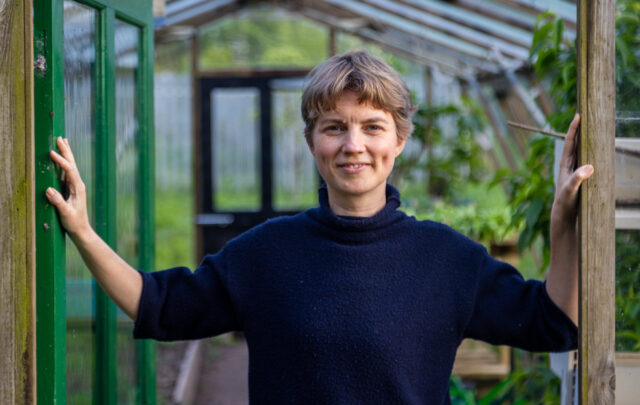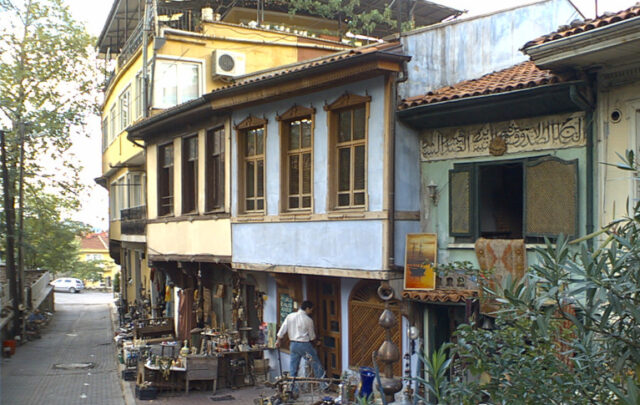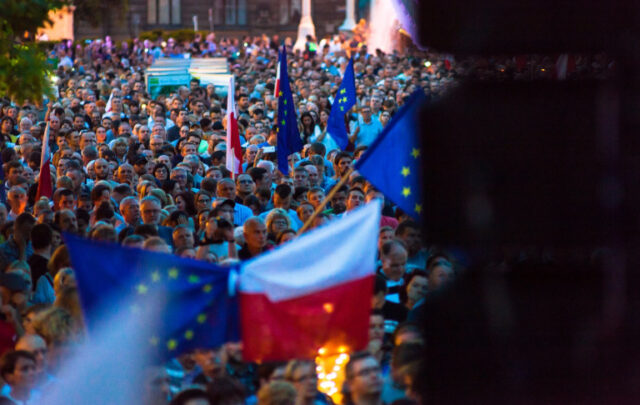Source: Wikipedia
What the film ‘Paddington’ tells us about the language of migration
I’m certainly not the first person to observe that the film Paddington is a story about migrants and refugees. I watched the film recently and it spoons it on with thick dollops of marmalade: Paddington Bear, who stowed away on a boat, Gruber, the antiquarian, who arrived in London on the kindertransport, and the calypso band, which functions as a kind of Greek chorus, who would have arrived on the SS Windrush and its successors.
But my interest in this story this week is the way in which we have developed a complex set of taxonomies about people who leave their original countries. One of the elements of the Twitter conversation this week, after the body of the three year old Syrian boy Aylan Kurdi was found on a Greek beach, was an attempt to shift the language about the Syrian tragedy and those fleeing it, from “migrants” to “refugees.”
‘Starts with one bear’
Anyway, the Guardian described it as the story of “another modern-day migrant in search of a new life.” The Economist’s take: “The initial reaction of several characters is to display their prejudices about immigrants.” The baddie, the taxidermist Millicent Clyde, sounds very like parts of the contemporary British Conservative Party when she tells the Brown’s neighbour, “it starts with one bear and pretty soon it will be the whole street.”
Part of Michael Bond’s original inspiration for Paddington was about displacement, and in particular the evacuated kids he saw in World War II, leaving London for the countryside with a suitcase and a label round their neck.
Migrants or refugees
Mr Gruber, on the kindertransport, was clearly a refugee; the calypso singer Lord Kitchener, who originally sang “London Is The Place For Me”, used as a motif throughout the film Paddington, arrived on the SS Windrush, and so is evidently an economic migrant. Paddington? Well, we might think he’s a refugee: his home has been destroyed, and his parents killed, in an environmental catastrophe. But we would be wrong about this, and not just under British law. One of the more interesting commentaries on the film was an article by an immigration lawyer, Colin Yeo, who treated Paddington as a legal object, a person seeking refuge in the UK:
Although he seeks refuge from a natural disaster, Paddington would not qualify as a refugee under the terms of the UN Convention Relating to the Status of Refugees. Refugee status can only be claimed by those fleeing persecution for certain specified reasons and natural disasters are not among them.
As for the Browns, who take him in, British law has long been fierce on this subject:
For offering a home to Paddington — or harbouring him, as the Home Office would have it — Mr and Mrs Brown could potentially face prosecution under section 25 of the Immigration Act 1971, entitled “Assisting unlawful immigration to member State”. The maximum sentence is 14 years.
The idea of ‘immigration’
And it’s pretty clear, by Colin Yeo’s account, that the Brown’s xenophobic neighbour, Mr Curry, would not have to go to any lengths to deal with his new (and from his perspective, unwelcome) neighbour. He’d just call one of the snitch lines that the Home Office has set up.
It’s sometimes hard to remember that the whole idea of policing national borders in Europe is a relatively recent phenomenon, dating back barely a century, to the wash from the last great globalisation boom in the late 19th century. In social history terms, we invented the idea of “immigration” only a few generations ago.
As Matt Carr noted in History Today, millions travelled across Europe, and to the United States, without passports or documentation. Things started to change with the economic crisis of 1873:
In 1882 the US government passed the first Chinese Exclusion Act in response to racist ‘Yellow Peril’ lobbying from California politicians. In 1885 Bismarck ordered the expulsion of 40,000 Polish workers from Germany to prevent the ‘Polonization’ of Prussia. … Even in laissez faire Britain Parliament passed the 1905 Aliens Act in response to a campaign against ‘destitute foreigners’ – a category that was generally understood to mean Jews from Tsarist Russia.
‘Like a millionaire’
Of the three types of migrant portrayed in Paddington, it is the calypso group that most interests me, partly because the notion of the “economic migrant” has been so heavily freighted over the last few years. Britain’s current proposals, for example, with its unworkable salary thresholds, seems to ignore the way migration works, in which people rebuild their lives by taking work that they are over-qualified for, or fill gaps in the economy that others are less willing to fill. (Think, for example, of the Afghan businessman in The Kite Runner, pumping gas in California.) Points sytems and ‘jobs-first’ policies are also riven with difficulties, both practical and ethical.
Lord Kitchener, and his fellow calypso singer Lord Beginner, both arrived in England on the Windrush, and Kitchener’s arrival was captured by Pathe newsreel. His signature song, “London Is The Place For Me”, composed on the boat, is a hymn to his new city.
To live in London you are really comfortable
Because the English people are very much sociable
They take you here and they take you there
And they make you feel like a millionaire.
Huddling in the snow
The West Indians who came to Britain in the late ‘40s and early ‘50s were invited here to fill gaps in Britain’s public services. They worked, often, in the health service and in transport. Their arrival caused acute conflict. Many of them settled in Notting Hill, where Paddington is set, then known for its cheap flats and rack-renting landlords, another world captured in the photos of Roger Mayne.
Not all of Lord Kitchener’s songs were so cheerful. The same Honest Jon’s compilation CD that features it also includes another Lord Kitchener song about mixed race kids, called “If You’re Not White, You’re Black”. A decade after the Windrush, race riots broke out in Notting Hill, as white working class teddy boys attacked black people in the area.
And a decade after that, as Joe Boyd recalls in his memoir White Bicycles, the area saw a boom in radical social innovation, including the first Notting Hill Carnival and the creation of the first “free school,” (rather more radical than the recent schools that have taken the name). Cheap housing and cultural diversity had done its work.
The last time we see the calypso group in the film, they’re huddling in the snow, slightly off the street, trying to find what shelter they can. In family films, snow is usually a marker of magic, for good or evil, but in Paddington, it’s just cold, and a little dangerous. They’ve been frozen out, literally and metaphorically, by the same flood of money that makes it possible for the Browns to live in their four-storey terrace in W10 (Mr Brown is a risk analyst). As always in regeneration, migrants make a new city culture as they meet the existing one, and mutually transform it. And then money takes it from them.
Toxic combination
Carr notes in his History Today article that the original restrictions on movement were based on a combination of racism and they were then reinforced during and after World War One by concerns over national security. This is a toxic combination of worldviews, and evidently it still sits beneath much of the discourse on migration.

Source: Karl Sharro
https://twitter.com/KarlreMarks
But it is also possible to imagine that this is a long blip, connected to the rapid growth in world population that is now receding, and the two big pulses of globalisation in the late 19th and late 20th centuries. 1990 was “peak baby”, globally speaking. All of the economic evidence suggests that migrants – of all kinds, not just the “deserving” or “valuable” ones – directly contribute more than they take out of the societies they move to. Indirect cultural and innovation effects are also evident. As societies age, with the adverse economic effects that ageing demographics bring, they will need migration to refresh themselves. In fact, there’s quite likely to be competition for migrants, not a race to the bottom on quotas, policing, and ugly metaphor.
Language matters
In other words, it is possible to read the current social and political dynamic about migrants as a short term response to the peak of population growth and the economic squeeze on the majority of people in richer economies caused by neoliberalism. It’s ugly while it lasts, but it’s possible that it’s close to its height right now. On this version. the narrative about economic gains will start to reassert itself as the demographic issues start to be felt. A decline in levels of inequality would also help.
In the meantime, language matters. The lexicon of migrants is coloured strongly by race, as Karl Sharro pointed out. And other language is also unhelpful, such as the use of the word “illegal” associated with migrants, as Bill Frellick of Human Rights Watch has observed. We don’t call people “illegal drivers” because they got ticketed for speeding last year.





